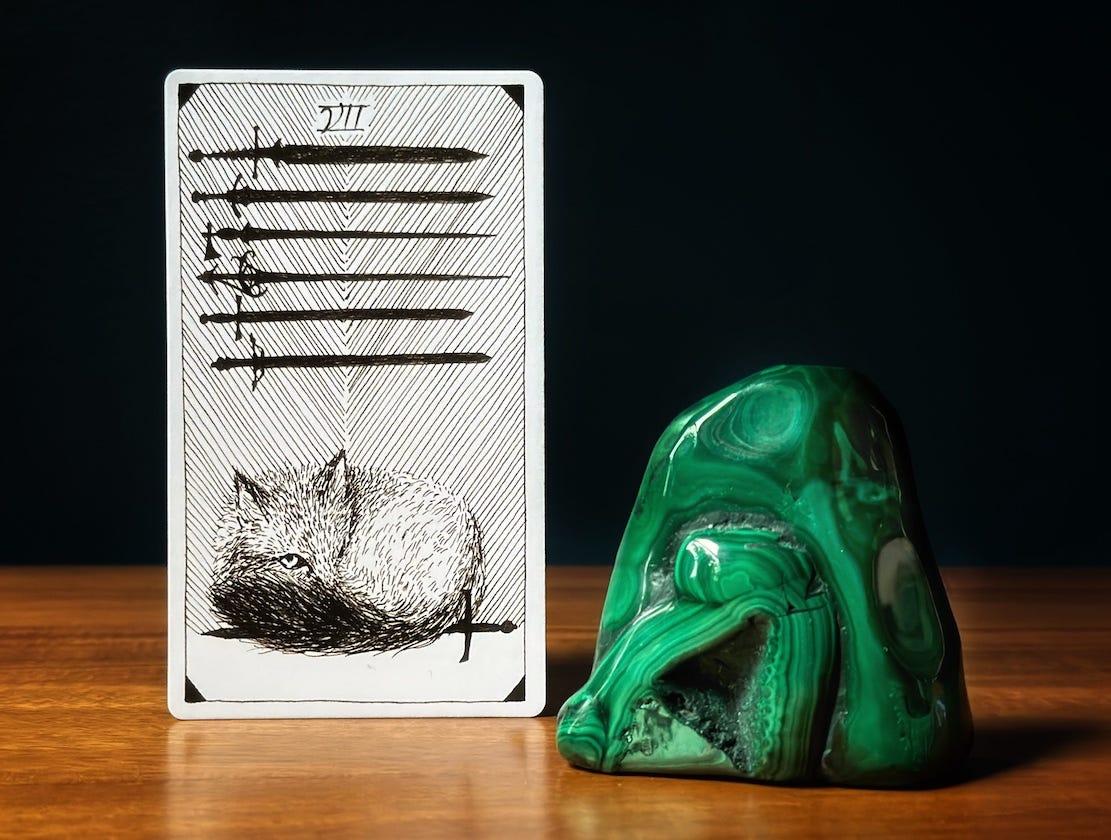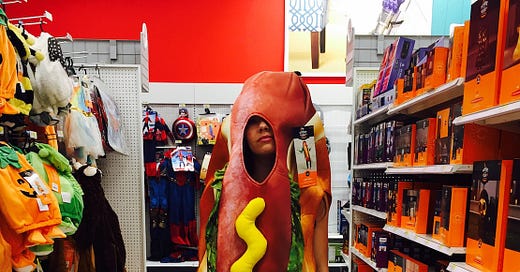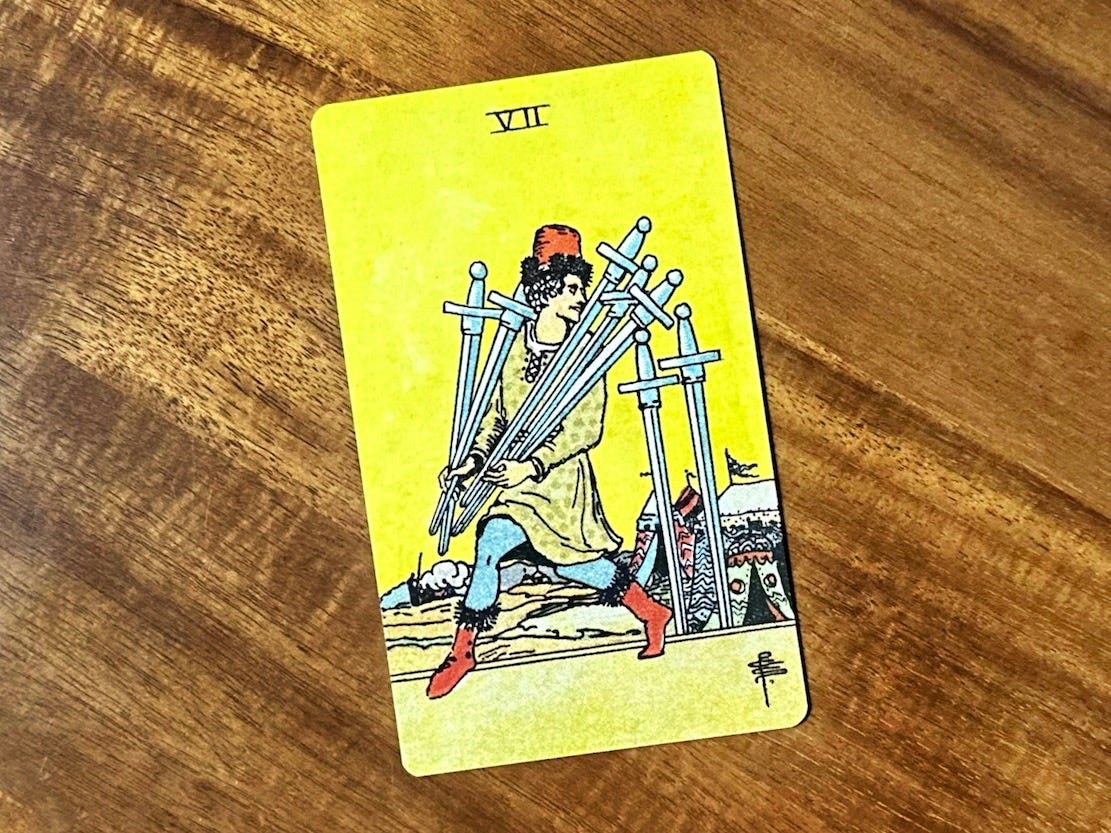Some people build a coming-of-age lore around their first kiss or sip of alcohol or puff of weed. My version involves retail. It was a black nylon DKNY purse I spied at the mall when I was sixteen. It took weeks of my part-time job at the local library to save up for it — the first “nice” thing I’d ever bought myself.
I can still feel my fingers curled around the handles of the crisp paper shopping bag. The small sense of accomplishment. The dopamine spike. The image I held in my mind of “life after purchase.” The tiny bit of hope, so fleeting it was almost imperceptible, that I was on my way to becoming someone new.
It was the early aughts, and a preoccupation with items was presented as more charming than concerning. There was Rebecca Bloomwood from the wildly popular Shopaholic book series (and movie) or the likes of Carrie Bradshaw, heroines good-naturedly tripping through life with armfuls of shopping bags. They were flawed, but that was part of the appeal. Perhaps the same can be said of us all.
My vice is buying shit and expecting it to change my life. Clothing, gadgets, potions, gear… none of which ever makes me taller, happier, wiser, or more organized. I am still waiting for luminous skin, impenetrable concentration, and an iron-clad work ethic. Any day now.
Occasionally, a purchase will enhance my existence. Other times, a candle is just a candle.
I stay off TikTok like it’s a matter of survival. For one thing, it makes me feel like Gandalf at a high school dance. For another, I don’t need one more attention chasm vying for my time. Yet TikTok finds me anyway, mostly through videos reposted elsewhere.
One thing I do not love is this trend of shaming people into dressing differently by mocking specific styles. It goes something like this:
A dancing lady — always a dancing lady — appears onscreen. She is a “fashion expert” which means we are to trust her. She wears a perfectly acceptable outfit — clean, presentable, innocuous. A big red “X” appears across the screen. This outfit is wrong, she tells us, by wagging one finger, and so are we for liking it.
Now the lady reappears wearing the exact same outfit with slightly readjusted proportions. The jeans, a little baggier. The blazer, a little shorter. Often, for reasons I cannot fathom, she’s added a ridiculous hat. She dances and dances, energized by her excellent styling. These are the correct pieces to own right now — in this one very particular season we inhabit. Go spend your hard-earned money on them (link in caption!) or risk judgment.
“No!” I yell at my phone. It feels mildly cathartic.
Then it’s on to another video — dachshunds in raincoats — safe for the next 90 seconds.
Sometimes, Target makes me cry.
It isn’t an aversion to fluorescent overhead lighting or linoleum floors. Nor my excitement over seasonal displays or cute home goods or cookies that provoke feelings of childhood nostalgia. It’s pure overwhelm.
In my twenties, I found big box stores to be comforting — reminiscent of my suburban upbringing and the home and family I hoped to have one day. I’d meander down the aisles, eyeing ceramic mugs and Halloween decorations and duvet covers, allowing them to transport me to an imaginary world of plenty, some future day when things were “figured out.” Spoiler alert: That day never came.
Now, it all inspires a feeling of dread. The packaging. The waste. The sheer volume of stuff. The honest-to-goodness necessities mingle with countless frivolities, sometimes masquerading as one another. The emperor has too many clothes. The emperor lacks perspective.
I don’t mean to suggest that I’m not complicit in this cycle. (This anecdote has me standing in a Target, after all, likely with a basket full of crap I didn’t know I needed until this moment.) What I do mean to say is that I have a complicated relationship with consumption. I know I am not alone.
We live in strange times, with tiny computers perpetually attached to our hands, the whole world a click away. We’re bombarded with ads from all directions, encouraging us to refresh our homes, appearances, wardrobes. We aren’t sold items; we’re sold lifestyles. Roles to inhabit, plus the cost of shipping.
“In the mood to shop?” asks a fashion round-up, presenting a bevy of light sweaters perfect for spring. Consumption-as-emotion. Whether we seek a lift, a change, or merely a distraction, buying shit is rarely the answer. But it is an answer — an action we can take — and that can be hard to ignore.
A good friend moved to the U.S. as a young adult. For her, the most surprising thing about life in America was not the culture, the privatized healthcare, the dating customs, the tax system. It was the cereal aisle.
“There is so much cereal,” she said, with equal parts awe and disgust. “Why are there so many kinds?”
I hadn’t noticed until she said so, but now I can’t unsee it. On a recent trip to Target (“research” for this essay), I spied fourteen varieties of Cheerios, seven types of Chex, five kinds of Cap’n Crunch, four variations on Cinnamon Toast Crunch, and a partridge in a pear tree. (For what it’s worth, this was at a smaller scale, urban Target that lacks a proper grocery section. Any suburban Wal-Mart puts our cereal aisle to shame.) This seems like the perfect metaphor for life within twenty-first century capitalism — that cycle of scrolling and shopping and sighing. It’s bigger than us. So vast that we almost lose sight of it.
The thing is, I should know better. I’ve occupied both sides of the equation.
While I have yet to dance on TikTok (never say never?), I’ve written copy for ad campaigns and editorials, and helped brands craft stories and identities. I understand that to sell a product, it’s not enough to cast someone alluring, interesting, vaguely aspirational — ideally, you present the consumer with an image of a person they’d like to be. What we buy, and how it is sold to us, is inextricably tied to identity, bridging the gap between how we view ourselves and how we want the world to see us.
We know there are costs to consumption — environmental, financial — but there is a personal one, too. A pervasive sense of striving. A lack of peace.
Something I find ironic is that the ads that have stayed with me throughout my life — by which I mean, the most emotionally manipulative of the bunch — never actually sold me on their product. They sold me on some beautiful part of living. Connection. Perseverance. Wonder. Triumph. Surprise.
If we dig deep enough, “to buy or not to buy” is never really the question. Perhaps it makes more sense to ask: What are we actually seeking? And what is the true path to the lives and ideals we’re being sold?
I am often reminded of the William Morris quote, “Have nothing in your house that you do not know to be useful or believe to be beautiful.” That leaves a lot of room for interpretation. Not just about what to buy or keep, but more importantly, who we wish to be.
What do we believe to be beautiful? No one can answer for us.
The dancing TikTok lady can wag her finger at whatever she wants, but beauty doesn’t fade with each passing season. It is ours to behold, whenever and wherever we seek it.
Card of the Week
Here is this week’s card for the collective, as well as some thoughts to carry into the days ahead. As most modern readers will tell you, the tarot is not about fortunetelling, nor is it about neat, definitive answers. The cards are simply one path to reflection, a way of better knowing ourselves and others through universal themes. If this reading resonates with you, great! And if not, no worries. Take whatever may be helpful and leave the rest.

Once, approximately three million years ago, I attended a birthday party with a tarot reader. She was installed at a corner table adorned with silk scarves, a crystal ball, and a stack of holographic business cards. I still use one as a bookmark.
The Seven of Swords came up in my reading — this very image from this very deck. The reader pursed her lips, widened her eyes, and asked who was being dishonest with me. A person I was dating, perhaps? Or was I the liar? Someone was holding out, she insisted, and I had to beware.
Perhaps it’s no surprise that I developed a bit of an aversion to this card, a harbinger of sneaky, sneaky foxes. But if you’ve been reading this newsletter for a while, you know that we don’t play that game here. This isn’t a place for fortunetelling, or even insight into other people. This is a place for asking questions, with the hope it may unearth truths or solutions we already carry inside of us.
Through that lens, the message from the Seven of Swords is very simple:
How are you cheating yourself?
It doesn’t have to look like hiding, sneaking, or outright dishonesty. There are lots of little lies we tell ourselves as we move through the world: Guilt. Imposter syndrome. Short-changing ourselves. Putting our own needs last.
“I don’t deserve this.”
“This isn’t meant for me.”
“I can’t pull this off.”
“I don’t belong here.”
“Why me?”
The Seven of Swords would like to know: Are you betraying yourself? It could mean not speaking up, not communicating a need, not advocating for yourself. Are you pretending or going along with something in order to keep the peace? Are you talking yourself out of attempting something, or downplaying a situation’s importance?
Other times, we know exactly what we want, but are afraid to let it see the light of day. We might do our work in secret, or silently dream of things we fear others may judge.
This card suggests that it’s okay to pursue the things that matter to us without feeling like we’re “getting away with something.”
So, ask yourself: What do you need? What do you want? What do you deserve? How are you standing in your own way?
The world is too often a liar. But the Seven of Swords is here to remind us that we don’t have to be. You deserve the truth — especially from yourself.
This card encourages us to accept whatever parts of us we feel compelled to hide. You are good, you are whole, you are worthy, it says. And so are your efforts.













"Gandalf at a high school dance" made me laugh out loud. Also 7 of swords is clearly spot on since I couldn't even bear to read the description at first, only skim, so shrouded in self denial that I couldn't bear a close reading (I have remedied that, give back and faced the words).
"How are you cheating yourself?"
I love that you identified both scenarios: sometimes we know what we are hiding and live a secret life in our heads, but also sometimes we have a feeling that we are hiding something from ourselves, but don't yet know what it is. I find the second one so challenging!